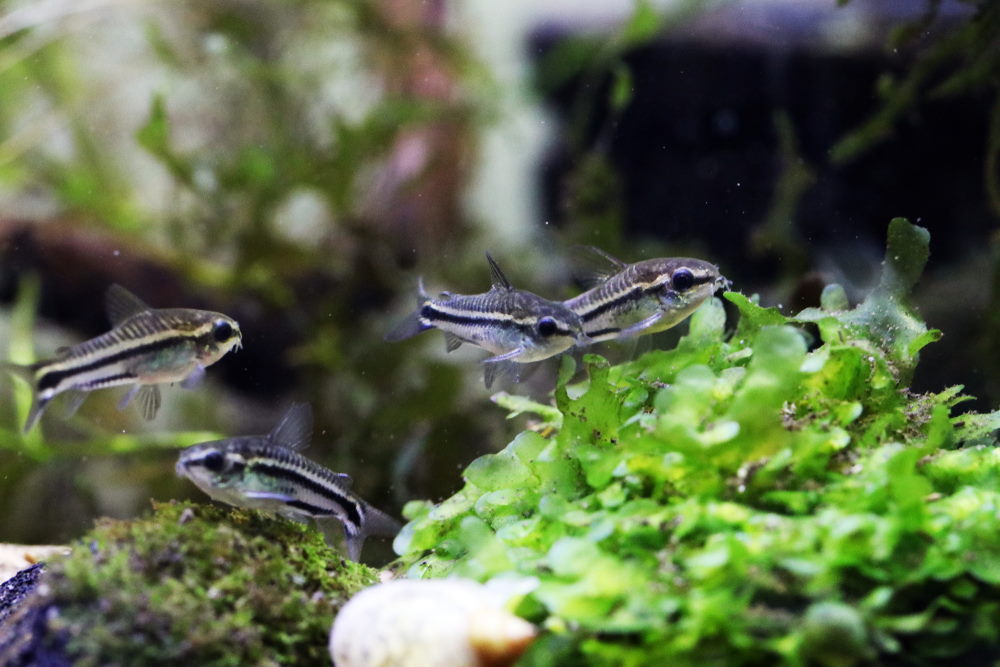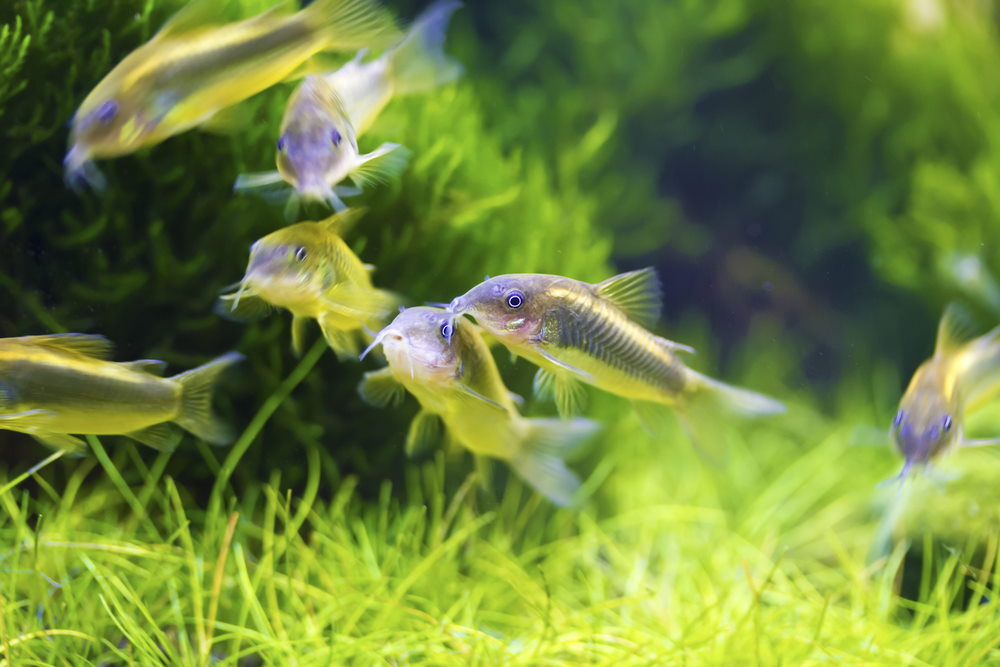Care Guide for Cory Catfish – The Perfect Community Bottom Dweller
Looking for a peaceful beginner fish with tons of personality? Look no further! The cory catfish, or Corydoras catfish, is one of the most popular community fish because they’re so happy-go-lucky, easy to breed, and helpful as a clean-up crew. In this care guide, we answer some of the most frequently asked questions about this adorable bottom dweller.
What are Corydoras?
This genus of South American catfish includes more than 160 species, with several hundred more that are waiting to be classified. Ranging from 1 to 3 inches long in the aquarium hobby, they’re named after the bony plates of armor on their body. For protection against predators, these little catfish also have sharp spines in their fins that can sometimes produce a mild venom when stressed (in other words, don’t try to catch them with your bare hands).
Depending on the species, most cory catfish enjoy temperatures between 72 and 82°F. For example, peppered cory catfish (Corydoras paleatus) and julii cory catfish (Corydoras julii) are found on the cooler end of the spectrum, whereas sterbai cory catfish (Corydoras sterbai) can live in higher temperatures. They also prefer pH levels ranging from 6.5 to 7.8.
In the wild, corydoras have been observed in large groups numbering from 20 to hundreds of the same species. They are most active in the daytime, with peak activity occurring at dawn and dusk. The most popular varieties in the pet trade include the bronze cory and albino cory (Corydoras aeneus), panda cory (Corydoras panda), emerald green cory (Corydoras splendens), and pygmy cory (Corydoras pygmaeus).

Pygmy cory catfish are one the smallest species of corydoras and love to swim in the middle of the tank, not just the bottom.
What Size Tank Do Cory Catfish Need?
For dwarf species, a 10-gallon aquarium may be suitable, but we recommend 20 gallons or more for most other varieties. As a relatively small fish, they crave safety in numbers, so a group of six corydoras or more (all of the same species) is highly suggested. These peaceful bottom dwellers can be kept with pretty much any community fish that won’t eat or attack them. (For instance, don’t keep corydoras with goldfish, which get rather large and will inhale anything that fits in their mouth.)
If you’re looking for fish stocking ideas, a 20-gallon aquarium could house a school of cory catfish swimming at the bottom, a school of small tetras swimming in the middle layer, and a centerpiece fish like a honey gourami. Add some lush aquarium plants and you’ve got a miniature ecosystem in your living room!

Cory catfish like to shoal together (or swim loosely in a group), so get at least six of the same species so they feel safe and comfortable.
Do Cory Catfish Need Sand Substrate?
Corydoras have wispy barbels or whiskers to help them find food, so smooth sand or gravel is preferred. (That being said, our CEO Cory McElroy visited their natural habitat in the Amazon and found the substrate to be quite sharp, as seen in this video.) In general, it helps to feed larger foods like worms and Repashy gel food that can sit on top of the substrate and not get trapped in between cracks where the corys can’t reach them.
In the wild, corydoras can be found on sharp substrate, so if their barbels start to erode, it may be caused by other factors like poor water quality.
What Should I Feed My Cory Catfish?
Speaking of diet, corydoras are not picky eaters and will eat anything small or soft enough to fit in their mouths. They love worms of all types, so try live blackworms, frozen bloodworms, and Hikari Vibra Bites (tiny food sticks that look like bloodworms). They also enjoy Repashy gel foods, sinking wafers, and other sinking community foods.
They are not primarily algae eaters, so you will need to specifically feed them to make sure they get enough nutrition. If housed with more aggressive eaters, it can be easy for cory catfish to get outcompeted during feeding times, causing them to waste away.

Corydoras are not algae eaters and therefore must be regularly fed in order to live a long, healthy life.
Can You Breed Cory Catfish in Aquariums?
Yes, very easily! Many fish keepers find that their corydoras breed randomly all the time without any special effort. Males have a smaller and thinner profile, whereas females are rounder and larger to hold all the eggs. Condition them (or prepare them for breeding) by feeding lots of nutritious foods, such as live blackworms and frozen bloodworms. You can also induce spawning by introducing cooler than normal water (by a few degrees) during water changes to imitate the rainy season. Soon enough, you’ll find sticky round eggs all over your tank walls and decor.
If you want to breed the catfish in the same tank they live in, it helps to provide lots of cover – such as a dense mass of java fern or guppy grass – and remove other species of fish. All fish (including the parents themselves) will happily eat the eggs, given the chance. For a higher survival rate, you can remove the eggs (with your fingers or a credit card) into a separate aquarium to raise the fry. Feed the baby catfish plenty of live baby brine shrimp and powdered fry food, keep on top of the water changes, and enjoy a whole new generation of corydoras.
Best of luck with your new cory catfish!




